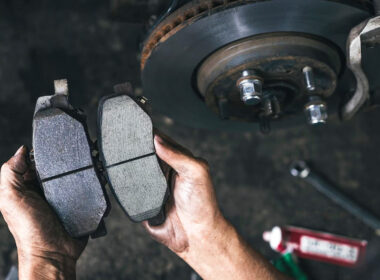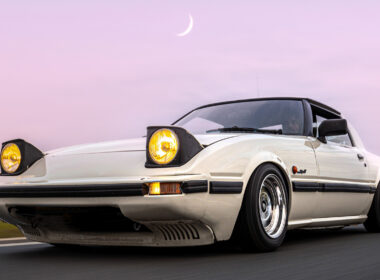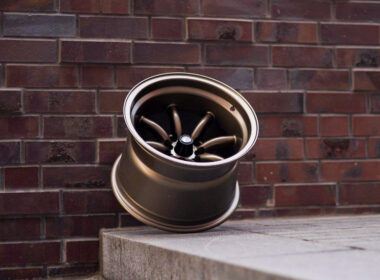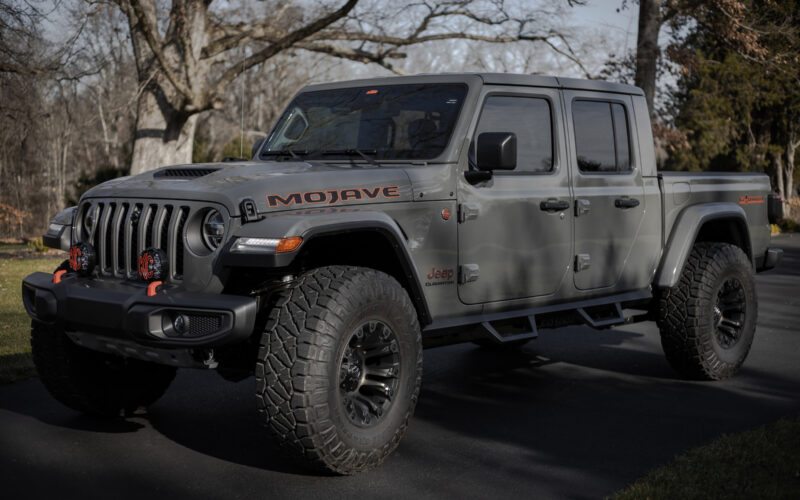Most factory suspension setups on modern 4x4s are tuned primarily for comfort and ride quality; off-road performance is typically the 2nd priority. That said, you can do a bit of wheeling with the OEM suspension, but there’s definitely a ceiling to it.
The more skilled you become, the more you’re going to want to push the limits of what your truck can do, and the quicker you’ll outgrow your stock setup. When that happens, you’re going to need a proper extended-travel suspension lift kit.
Unlike leveling kits, lift kits do a lot more than let you balance out the factory-rake and clear larger tires. They can significantly improve the composure of your truck when driving off-road.
If you’re getting serious about off-road driving, or if your lifestyle requires you to traverse difficult terrain in your truck, they’re pretty much a necessity.
Read on to learn more about lift kits, who should install one, and check out some of the best options for your truck.
Choosing the Right Lift Kit
The main purpose of installing a suspension lift kit is to enhance the off-road capability of your truck. How much of an enhancement you need depends on what you plan to do with your rig.
For instance; rock crawiling and technical trails will require as much ground clearance and droop travel as possible, while fast fire roads, washboard tracks, and dirt tracks will require more up-travel and damping profiles suited for high-speed use.

The more you spend on a lift kit, the more free-reign you’ll have over the damping characteristics of your suspension in the form of features such as bypass tubes, external reservoirs, adjustable ports, and rebuildable pistons.
High-end options come with tunable internal or external bypass tubes which allow you to change your damping on the fly, which is a great feature to have, but it’s overkill for most non-competitive applications.
Spending more also means you get a well designed lift kit, which is very important considering how invasive this upgrade is. Here’s what you get when you buy a complete lift kit made by a reputable brand:
- Maximum available wheel articulation without upsetting your driveline, suspension, or steering geometry
- A comprehensive yet well-written instruction manual
- All the necessary geometry-correction hardware
- Components that fit just right
- Recommendations for maximum lift and other wheel alignment angles
That said, you do also get more affordable lift kits made by reputable manufacturers, and they’re sufficient for most people.
Lift kits are far more comprehensive compared to leveling kits, and they include some or all of the following components:
- Either a combination of perfectly matched springs and shocks or coilovers
- Adjustable control arms
- Leaf packs
- Front blocks
- Rear spacers
- U-bolts
- Cross-member drop brackets
- Differential relocation bracket (for IFS-equipped 4x4s)
- Skid plate
- Other installation hardware
With all that in mind, if a neutral rake and an aggressive stance is all you really want, then we recommend leveling kits. But if you want to maximize the off-road driveability of your truck, then lift kits are the way to go.
Factors to Consider Before Lifting Your Truck

Most negative experiences that people report after lifting their vehicles can be attributed to improperly fitting the lift kit and not taking the necessary post-installation measures.
A lot goes into getting your lift kit setup right; it’s not something that you can simply unbox, bolt on, and go about your day. Here are some of the factors you need to consider before and after installing a lift kit.
Suspension Type
Most modern vehicles have either independent or solid axle suspension. The two accomplish different goals and have a contrasting design. You’ll have to do things a bit differently depending on what type of suspension your truck comes with.
If you’re new to this, don’t worry, because as long as you buy a lift kit that’s made specifically for your 4×4, you’ll be getting the right parts. The rest can be taken care of with the assistance of an experienced technician.
Here’s what you need to keep in mind when lifting an IFS vehicle vs. a Solid axle rig.
Independent Suspension

Assuming you install an extended travel lift kit, lifting your IFS vehicle will give you more suspension travel, but it will give you a disproportionate amount of bump and droop. In other words, a lift kit will give you more up travel and reduce down travel.
With independent suspensions, there’s always a trade-off with how much you can lift and how much wheel articulation you can retain. More lift equals reduced droop travel but more bump travel, and vice versa. All of this also depends on static weight distribution and spring stiffness.
This is something to keep in mind if your main intention behind installing a lift kit is to clear larger tires. Regardless of where the center of your wheels sit at ride height, your upsized tires will end up in the same position as your stock tires either at full extension or full compression.
Additionally, because the differential in independent suspension setups is connected to the chassis, the diff center will drop and rise with the truck body as the wheels articulate. This, along with the added lift, puts your CV axles and ball joints at extreme angles.

To fix this and correct your suspension and driveline geometry, you’ll have to resort to solutions such as:
- Relocating the differential
- Using adjustable control arms
- Changing your tire size
- Relocating suspension pick-up points
- Using subframe spacers
- Installing pinion angle correction shims
Which one of these fixes to implement depends on what truck you drive, how much it’s lifted, what kind of lift kit is used, and your driving style.
Solid Axle
Solid axles are very old suspension technology, but the reason they’re taken so seriously is that they can do things that independent setups just can’t.
The main advantage with solid axle suspensions is that the axles and CV joints remain in line with the differential center with a lift kit installed. That’s because the differential is a part of the axle, unlike independent setups where it is bolted to the chassis.

As a result, when lifting a solid axle vehicle, the change in angle occurs between the transfer case and the axle, as opposed to the steering knuckle and differential as seen on IFS setups.
This allows you to add a ton of droop travel which gives you more free-reign in terms of how much lift you want to add.
This is ideal for slow technical trails and rock crawling, because those driving styles favor droop travel, while high-speed applications require more uptravel.
With that in mind, here are a few factors to consider when lifting your solid axle suspension:
- Instead of going overboard with how much lift you’re adding, consider increasing your ground clearance by installing a portal axle instead.
- If your lift height is excessive and you notice your tail shaft is binding, get it flipped or notched by a professional for better clearance.
- If the angle of your drag link increases too much, it will result in bump steer. That’s something to keep an eye on.
- You might require a caster correction kit. Consider installing offset correction bushings or a lift correction arm with corrected caster.
- Look into installing adjustable panhard rods if your axle is off to one side under normal load.
Don’t Break Your Brake Lines

This is something to be mindful of regardless of your suspension type. The more you lift your truck, the more you’re going to over-flex your brake lines. At some point they will break and you won’t be able to stop your truck.
Installing extended brake lines is a non-negotiable addition to your lift kit, and it should not be an afterthought.
Level Your Headlights
You can get away with not paying any attention to this issue. But by fixing it, you’ll make it a lot easier for oncoming traffic. When you lift the front end of your truck, you inadvertendly change the angle of your headlight beam.

This can make it look like you have your brights on even when you don’t. For your own sake and everyone else’s, it’s important that your oncoming traffic maintains maximum visibility. With that in mind, do remember to get your headlights leveled after lifting your vehicle.
Expect Diminishing Returns Beyond 2″ of Lift
It’s not uncommon for people to go overboard with lift kits. It’s worth keeping in mind that lifting your independent suspension any more than 2″ is going to require more effort and money than it’s worth.
You’ll definitely see diminishing returns beyond that point as you’ll have to include many new parts and changes to keep your suspension geometry from getting messed up. If you’re inclined to put in the work and know what you’re doing, by all means, go for it.
But if this is more of a form-over-function type upgrade for you, there are other things you can do to make your truck look aggressive. Also consider your state laws surrounding upgrades like lift kits.
Concluding Summary

We strongly advise that you consult a reputed technician who has experience in lifting 4×4 vehicles if you want your build done right.
The last thing you need is to be stranded way out in the boonies because of a broken CV axle or something else due to incorrect installation.
It’s difficult to explain what a good suspension feels like, you need to experience it, and you will if you do everything right!




